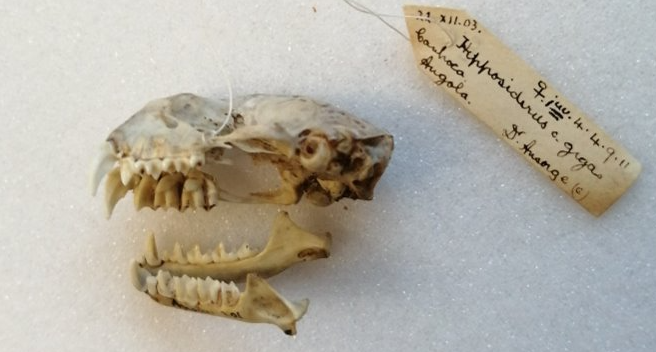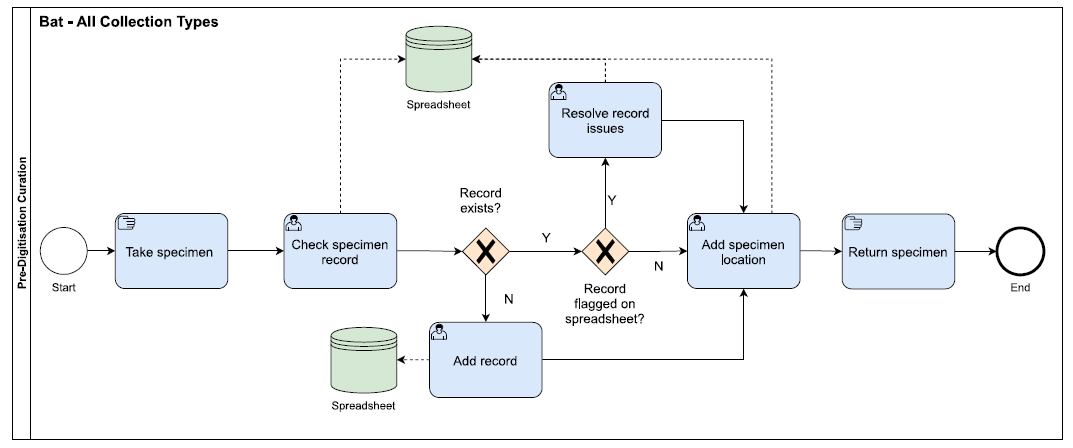NHM Bat/Chiroptera Collection Digitisation - Spirit, Skulls, Skins
Table of contents
Overview
This workflow describes the digitisation of the bat collection at The Natural History Museum, London, funded by SYNTHESYS+ Virtual Access. The NHM Bat Collection includes skins, skulls and specimens preserved in spirit. Some of the collection was already partially digitised, and this workflow describes some of the challenges that digitisers can face when dealing with inconsistent data quality from past digitisation efforts. This project did not include image capture.
Workflow
Pre-Digitisation Curation
Step 1: A large part of the bat collection already had a digital record in the Museum’s Collections Management System (CMS), and the first step in this workflow is to export the existing records into a spreadsheet. The digitiser then checks the exported records for any data quality issues, including duplicate records and whether the unique identifier for the specimen was in the correct format. These records are flagged in the spreadsheet, so they can then be checked against the specimen labels.
Common record issues included duplicate records and unique identifiers not recorded in the correct format. A single bat specimen is often present in the collection in multiple preservation types e.g. it may have both its skin and skull preserved, but this information was often not correctly recorded in the CMS.
Step 2: Once the records in the CMS have been exported and an initial check completed, the next stage was to look at the specimens and compare this against the digital record. The workflow below was completed for our skin, spirit and skull collections. In some cases, no record for the specimen existed, and this was added. For specimens where issues were flagged during step 1, the digitiser used the specimen labels to resolve these record issues.
Electronic Data Capture
The workflow below show the transcription process for the skin collection. All information contained on the labels was transcribed.
The next workflow shows the transcription process for the spirit and skull collection. The difference in these workflows is the specimen often needed to be removed from its vial or jar for the full label information to be visible.
Other Sources
Blogs and Articles
How natural history museums can help fight future pandemics
Digitisation on demand: mobilising natural history data to address society’s biggest challenges
Authors
Phaedra Kokkini, Lisa French, Laurence Livermore
Natural History Museum

Contributors
Authors are those who directly prepared this guide, however this workflow builds upon the working practices and insights of numerous colleagues over many years, particularly the NHM Vertebrates team and previous members of the digitisation team (Natural History Museum)
Citation
French, L., Kokkini, P. & Livermore, L. (2022) DiSSCo Digitisation Guide: NHM Bat/Chiroptera Collection Digitisation - Spirit, Skulls, Skins. version 1.0. Available at: https://dissco.github.io/MicroscopeSlides/MicroscopeSlide.html
Licence
Document Control
Version: 1.0
Changes since last version: N/A
Last Updated: 16 March 2022
Edit This Page
You can suggest changes to this page on our GitHub




